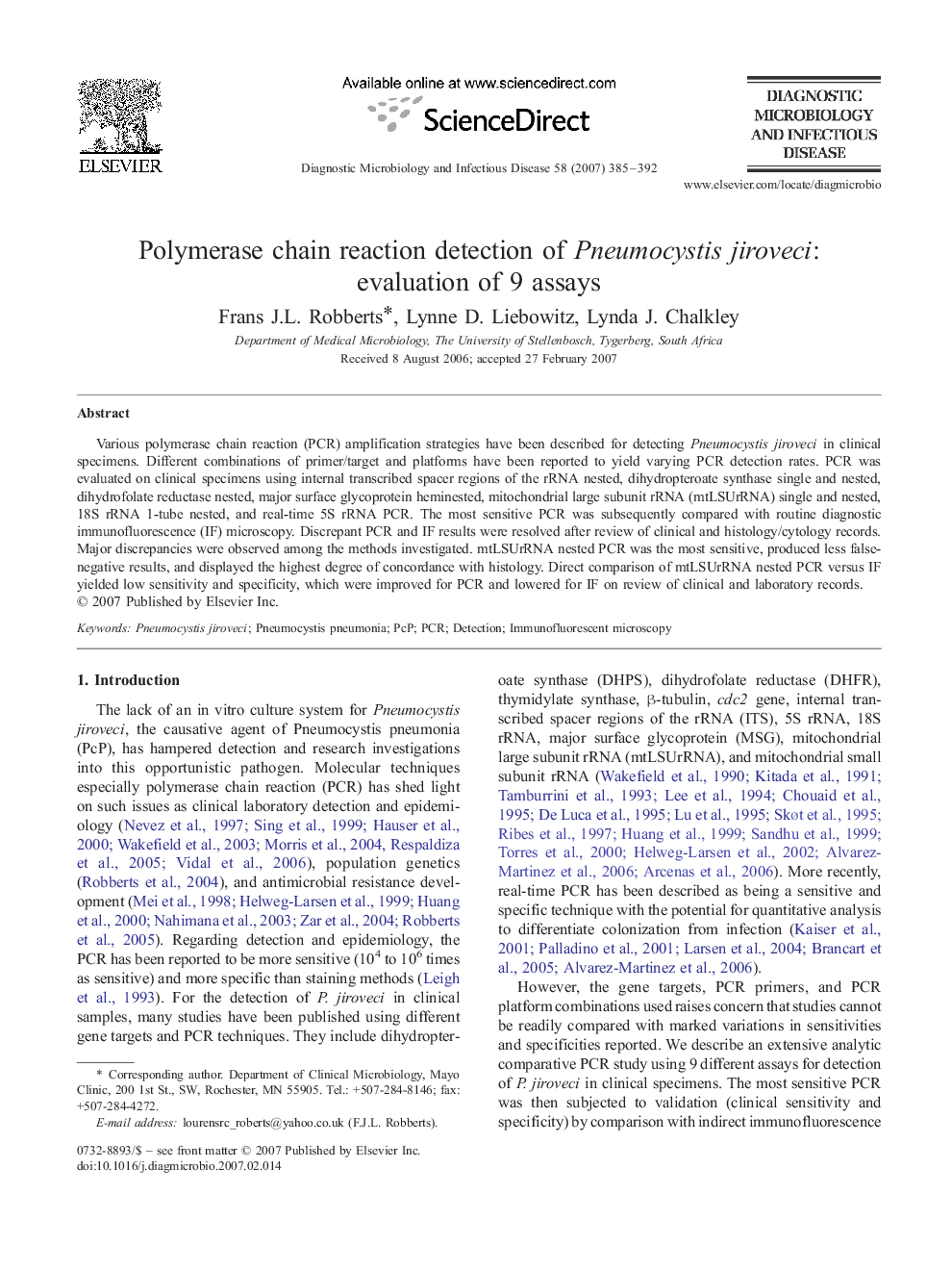| Article ID | Journal | Published Year | Pages | File Type |
|---|---|---|---|---|
| 3348229 | Diagnostic Microbiology and Infectious Disease | 2007 | 8 Pages |
Various polymerase chain reaction (PCR) amplification strategies have been described for detecting Pneumocystis jiroveci in clinical specimens. Different combinations of primer/target and platforms have been reported to yield varying PCR detection rates. PCR was evaluated on clinical specimens using internal transcribed spacer regions of the rRNA nested, dihydropteroate synthase single and nested, dihydrofolate reductase nested, major surface glycoprotein heminested, mitochondrial large subunit rRNA (mtLSUrRNA) single and nested, 18S rRNA 1-tube nested, and real-time 5S rRNA PCR. The most sensitive PCR was subsequently compared with routine diagnostic immunofluorescence (IF) microscopy. Discrepant PCR and IF results were resolved after review of clinical and histology/cytology records. Major discrepancies were observed among the methods investigated. mtLSUrRNA nested PCR was the most sensitive, produced less false-negative results, and displayed the highest degree of concordance with histology. Direct comparison of mtLSUrRNA nested PCR versus IF yielded low sensitivity and specificity, which were improved for PCR and lowered for IF on review of clinical and laboratory records.
